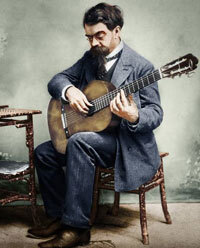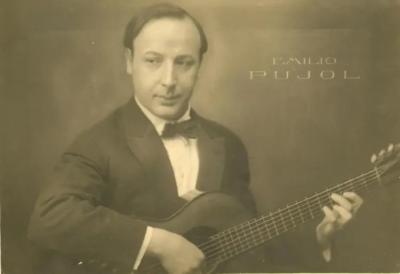Is it okay to play classical guitar without fingernails?
The short answer is Yes! It a time-honored tradition within classical guitar history to play without nails. We have many members at CGC Academy who play without nails and do quite well.
Having said that, it is important to recognize that most classical guitarists today play with fingernails in the right hand. And there’s good reason for that. Nails make it a bit easier when it comes to speed, clarity, volume, and tonal contrast. These things are all still very much possible without nails, but they will take more work and time to craft them.
But playing without nails offers different benefits as well. You can get a warmer sound without the hassle of maintaining your nails. Taking care of nails can be a time-intensive thing. Ditching nails in that sense leaves more time for practice! You also have more direct contact with the strings. Some paint this in a romantic light, but from a practical perspective it simply removes some of the nail noise and can boost accuracy without the distraction of the nail.
Table of Contents
History
Renaissance & Baroque
Early plucked instruments were generally played without nails for several reasons. First of all, nails were very hard on the gut strings they used. And gut was not cheap, so the strings lasted longer when playing with flesh. Secondly, playing with flesh produced a sound that fit those smaller-bodied instruments better. That is why to to this day most lutenists, vihuelists, and baroque guitarists play without nails.
However, we know that John Dowland spoke out against the use of nails on the lute. And that means that there were some lutenists during the Renaissance who used them! Piccinini also likely used nails on the lute and discusses others using nails on the archlute and theorbo, for instance. Many archlutenists and theorbists still play with nails today.
Nineteenth Century
During the nineteenth century, Spanish guitarist Dionisio Aguado used nails. However, several of his contemporaries did not use nails. These include Fernando Sor and Matteo Carcassi. In fact, it is reported that Sor convinced Aguado to cut off his thumbnail when they played in duos together near the end of Aguado’s life.
While Giuliani, Legnani, Regondi, Paganini, and Mertz did not write about the use of nails, all of their music is quite virtuosic. Typically nails are important for speed and control. For that reason, one could assume they may have used nails. But we have no real way of knowing with current sources.
Regardless, up until the time of Francisco Tárrega there were guitarists playing both with nails and without nails.
Tárrega and Emilio Pujol
Tárrega
 By the time of the turn of the twentieth century, Spanish composer and guitarist Francisco Tárrega had played guitar with nails most of his life. However, in 1902 he played his first concert without nails. While Domingo Prat reported he had to cut off his nails due to deteriorating health, Emilio Pujol has a different story.
By the time of the turn of the twentieth century, Spanish composer and guitarist Francisco Tárrega had played guitar with nails most of his life. However, in 1902 he played his first concert without nails. While Domingo Prat reported he had to cut off his nails due to deteriorating health, Emilio Pujol has a different story.
Pujol, who studied directly with the maestro from a young age, claims Tárrega grew dissatisfied with the sound of nails. Seeking to match the warmth of the string quartet, the maestro gradually made his nails shorter and shorter. But as he began to play with the fingertips he realized he needed to alter his technique. With this new no-nails technique, he continued to perform and compose until his death in 1909.
Emilio Pujol
 Tárrega’s student, Emilio Pujol was also a proponent of no-nails technique. In fact, he talks about it at length in his section on technique in volume 1 of his landmark Escuela Razonada de la Guitarra. He also wrote an article on the subject of timbre on the guitar. Pujol comes to the conclusion that the nail activates too many overtones (especially upper partials), while the flesh carries more of the fundamental. And for this reason the two ways of playing simply produce different sounds.
Tárrega’s student, Emilio Pujol was also a proponent of no-nails technique. In fact, he talks about it at length in his section on technique in volume 1 of his landmark Escuela Razonada de la Guitarra. He also wrote an article on the subject of timbre on the guitar. Pujol comes to the conclusion that the nail activates too many overtones (especially upper partials), while the flesh carries more of the fundamental. And for this reason the two ways of playing simply produce different sounds.
However, he also could become quite poetic. In the end, he drew a picture of contrast that is perhaps a bit stereotyping:
Each style . . . embodies a distinct mentality: the one spectacular and tending to exteriorize one’s personality, and the other intimate and sincere, deeply penetrated by the spirit of art.
No doubt the above passage could be written by a pro-nails player, only flipping which description fit which style!
Segovia and the Nails Revolution
But with the invention of the nylon string toward the beginning of the twentieth century, this all changed. Universally most guitarists began to use nails. And it is Andrés Segovia who is usually held responsible for this sea change.
As we have seen, Segovia was certainly not the first modern guitarist to use nails, but he is by far the most influential. It is fair to say that Segovia made the use of nails almost universal in his concertizing, recording, and teaching.
According to Segovia, nails were necessary for the type of volume and projection needed to fill a large hall. However, he also had his own prejudices and disliked the sound of the fingertips, much as Pujol disliked the sound of nails.
Do any contemporary guitarists play without nails?
Yes! There are still many who play the classical guitar without nails today.
Rob MacKillop
The most important no-nails player today is Scottish guitarist, early-music plucked instrumentalist, and ukulele player, Rob MacKillop. Rob has a brilliant website where he provides resources and inspiration for those playing classical guitar without nails or with fingertips.
You can peruse his many recordings without nails and discover different techniques and players at his site.
Virginia Luque
Spanish-American guitarist Virginia Luque is a great example. While she keeps a short nail on her thumb, she only uses flesh on the fingers. Luque studied with Segovia and, while Segovia spoke harshly at times about using fingertips on guitar, he supported Luque in her no-nails playing.
The video below is an enchanting example of no-nails playing on classical guitar. There is no lack of virtuosity, color, speed, and control in Luque’s playing.
Technique: How to play classical guitar without nails
The most important thing to add about no-nails technique is that, like playing with nails, there are many valid approaches. There is no “one correct technique” to playing without nails on classical guitar. Below are just some of the most important matters to consider. Working with students at CGC Academy, we have discovered that making slight adjustments to a “nails” technique can still produce a beautiful sound. And it still allows you to play diverse and advanced repertoire.
The vibrating string
The guitar string will resonate in the most pleasing way when it vibrates perpendicular to the soundboard, or top of the guitar. This allows for the proper transfer of energy that produces the air behind the soundwave. The ideal path the finger will take on the string will be to depress the string toward the soundhole so that the string vibrates perpendicular to the top.
If the string is plucked by pulling up on the string, it will slap against the fret, giving a sound that is less than pleasant.
- One important caveat here is that Rob MacKillop’s technique is to “pluck the strings from underneath.” However, he does so at an diagonal angle by supinating his wrist (rotating his wrist rightward toward the pinky) and this prevents the slapping sound you might get with nails by plucking from underneath. Again, there is no one “correct” no-nails technique!
The nail and the vibrating string
The nail can help to produce this same kind of release on the string very naturally. In fact, a ramped nail shape will naturally push the string downwards. So how do we achieve this same effect without nails?
Depressing the string
The fingertip without any assistance from the nail must press the string a bit more downward before releasing to produce this purer kind of sound. In short, it takes more effort on the string.
This is perhaps the most important part of no-nails technique as it works with rather than against the natural vibration of the ringing string.
Release
Releasing the string in such a way that you don’t run into a neighbor string, especially when depressing the string a bit more toward the soundhole, will take care. One obvious solution to this problem is to use the rest stroke technique.
And this is exactly what both Tárrega and Pujol taught their students. However, there are many instances where rest stroke is simply not practical. In those instances, you must use the arch of the wrist to place the finger in exactly the right position that it can avoid the adjacent string as it makes its path up into the palm after plucking the string.
Slo-Mo Video of Right Hand without Nails
Check out Steven Watson, from NoNailGuitar, in this close-up, slo-mo video of the right hand without nails:
Do I have to change my technique if I learned with nails?
Maybe not! While many no-nails players will tell you that nails technique is not conducive to no-nails playing, it is our experience that experimentation is necessary to find what works for you. You may learn that with a bit of careful attention to depressing the string toward the soundhole and creating a smooth release on the string the right hand can stay in its position you have developed while playing with nails.
Having said that, some do find that supinating the arm slightly to the right will allow a better contact and release on the strings. So, just like learning to play with nails, experimentation is key here.
Should you play without nails?
So should you try playing classical guitar without nails? This is really a subjective thing and more about preference than anything. Playing with nails and playing without nails will give you a different sound on the instrument. And there are advantages and disadvantages to both. But neither is “right” nor is one more of a “true” or “pure” sound than the other.
However, we each have our preferences and that is what you want to tap into. One thing to consider right away is to listen to as many no-nails players as you can. Determine whether you like their sound or not. If you do, you may want to give it a shot!
Classical guitarists who play without nails
Here is a short list of living players who do not use nails. You can find longer lists at both Rob MacKillop’s site and Steven Watson’s site.
***
We hope this deep-dive into no-nails technique on classical guitar has been helpful for you on your journey!
Go here if you are interested in learning about playing classical guitar with nails.
And click this link if you would like to become a member of CGC Academy.

Leave A Comment